What is Hanadama Pearl? The Ferraris of the Pearl World!

For centuries, Pearls have been adored by humans and associated with patience, wisdom, wealth, purity, and peace. Even today, these Pearls are regarded as splendid gemstones, which is why they are significantly used in jewelry.
If you are a pearl admirer, you must have heard of Hanadama pearls. Experts recall Hanadama Akoya Pearls, the Ferraris of the Pearl world! They are considered one of the most precious and valued of all pearls, and there are reasons for that.
If you wish to learn more about Hanadama Akoya Pearls and why they are so precious, keep reading because you are on the right page.
What is Hanadama Pearl?
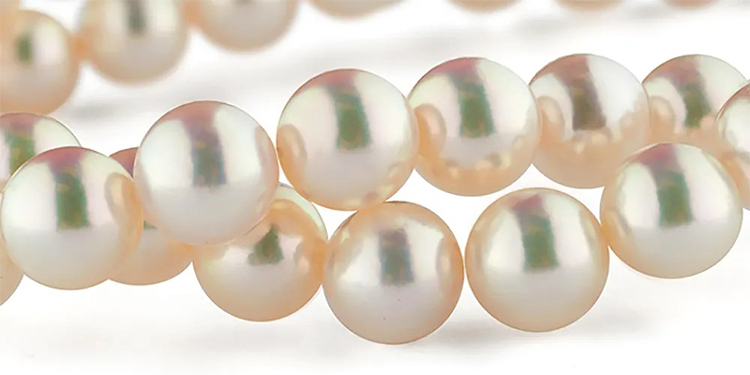
"Hanadama" is a Japanese word that means "Spherical Flower." Some pearl traders also call these pearls the "Flower Pearls." They are named Flower Pearls due to the delicate pink shades that shimmer over their surface and resonate with Japan's famous Cherry blossoms that mainly bloom in the springtime.
Mikimoto Kōkichi, father of cultured pearls and founder of the Japanese company Mikimoto was the one who gave the Hanadama pearls their actual name. He used this term to designate Hanadama pearls as his most pleasing and beautiful Akoya pearls.
How to tell if a Pearl is a Hanadama Pearl?
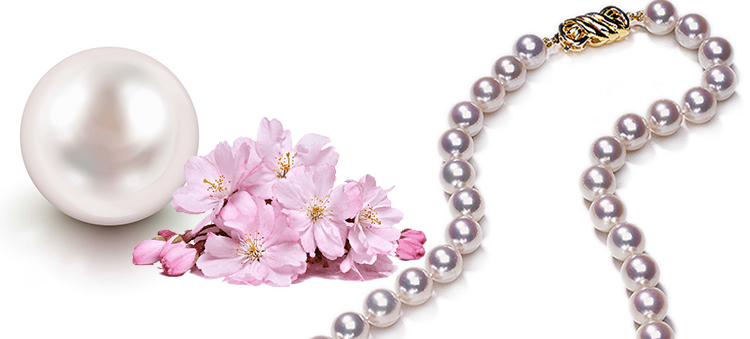
Remember that not every pearl obtains the designation of "The Prime Hanadama Pearl!"
Some certain parameters and tests entitle Pearls to be called Hanadama Akoya Pearls. The Pearl Science Laboratory of Tokyo, Japan, is the trusted authority that runs a series of rigorous tests to give the "Hanadama" certification to pearls.
The tests usually check for the Luster, Nacre thickness, Ideal Surface, and Aurora or Orient. These attributes are analyzed to determine whether they meet definite PSL sets' levels.
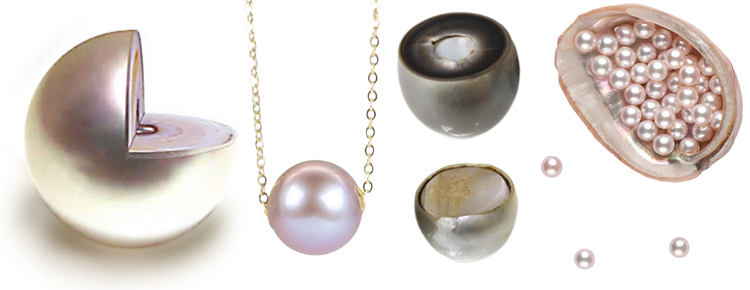
The most emphasized factor is their luster which lands these certified pearls on top of the list of highest-luster cultured pearls. During the testing procedure, besides Strong luster, specialists also check their Nacre Thickness which should be at least .8mm of the total nacre. Besides that, near the flawless surface, there should be just 1 "deep" inclusion per strand. Lastly, these finest pearls should always show an iridescent soap bubble effect on their surface called Aurora or Orient.
What Makes Hanadama Pearls So Special?
As stated earlier, the Pearl Science Lab of Japan checks the Luster, Nacre thickness, Flawless surface, and Orient to validate pearls as Hanadama Pearls.
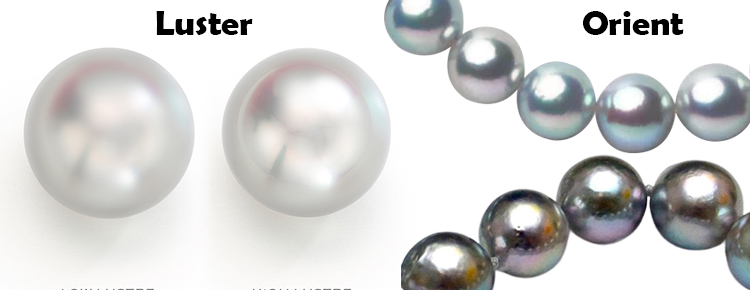
Out of all these, mainly the Luster and Orient separate Hanadama Pearls from the rest and make them the most valuable pearls of all! They are called the Ferraris of the Pearl world for that very reason!
Luster is what glows and grabs the attention of every eye in the room. The brighter a pearl, the prettier it is and the more worthy it is to wear! The Hanadama certification, based on the unique Luster and Orient, marks these pearls as Supreme Akoya pearls.
So, the attributes of Orient and Luster hold immense importance in the pearl industry, but what exactly are they?
Luster

Luster measures the brightness and the degree of sharpness with which light reflects from or just under the pearl's surface. Being one of the most lustrous pearls, Hanadama pearls have an extremely sharp brilliance. The light that falls on their surface is crisp, with no blurring or smearing around their edges. You can simply notice the sharp reflection falling into your eyes while holding these pearls in light.
Orient
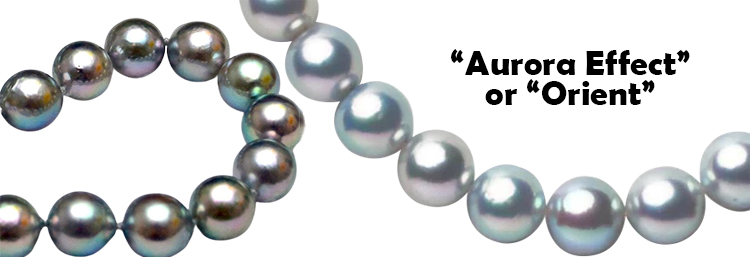
It is a rainbow-like soap bubble effect that you spot only in the best quality pearls. Similar to the reflection, the orient effect occurs in the presence of light when light strikes the nacre layers of pearls and slowly penetrates these layers. During this, the light splits into the spectral rainbow and bounces all the way back.
The above two characteristics are feasible only due to the one sole constituent of Pearls, which is their tightly packed and thick-layered crystalline nacre.
Nacre is the main element that helps in grading all the superior-quality pearls. To be concise, the nacre is the collective term used to represent all the crystalline platelets structures that surround the nucleus and make the whole body of the pearl. Nacre consists of a micron-thin aragonite platelet that is densely layered with organic materials film of conchiolin, both surrounding the mother-of-pearl bead nucleus in concentric layers.
What's the difference between Regular White and Natural White Hanadama pearls?
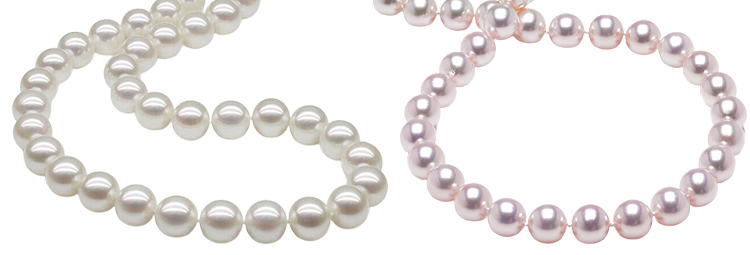
To put it straight, Hanadama pearls are excellent and high-grade Akoya pearls. Each Hanadama Pearl strand comes with a numbered Hanadama certificate from the Pearl Science Laboratory of Japan. They are available in Natural White and Regular White options in the market.
Natural White Hanadama Pearls
As the name suggests, Natural White pearls are natural and untreated Hanadama pearls. These are specially selected pearls from the harvested pearls, which are chosen due to their shine, color, and high iridescence! The color of these pearls is basically stark white with both silver and pink overtones. The Pearl Science Laboratory certificate states that the pearls are natural without any color treatment or alterations in their certifications.
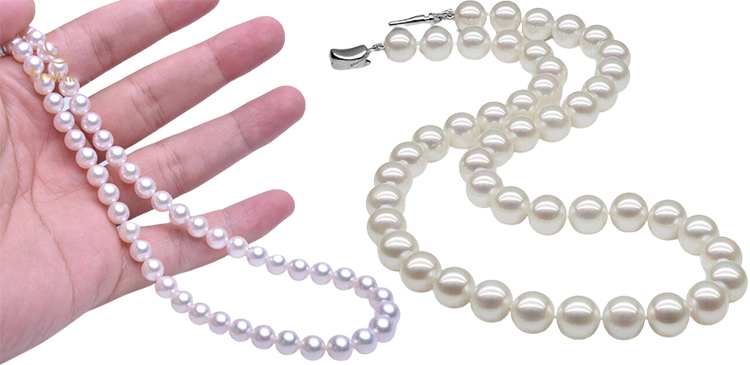
Regular White Hanadama Pearls
Regular white pearls are more in the rose overtone due to the artificial coloring process called pinking. After this process, the pearls will acquire a uniform silver-rose color or pink overtone.
The Natural White Hanadama strands are rarer than the Regular White Hanadama strands, so they are pricier than the former ones. No treatments, alterations, and human invasion Natural White Hanadama as they are, match the standards of excellence set by the Pearl Science Lab of Japan!
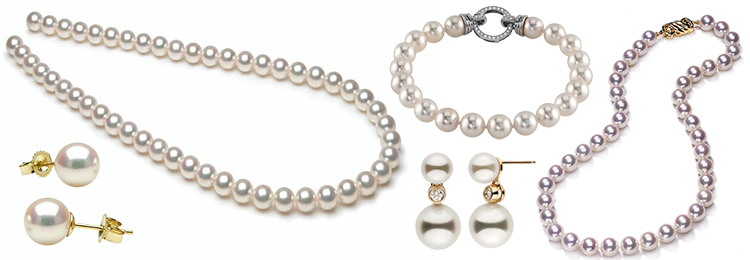
What are the Common Hanadama Akoya Pearl Sizes and Lengths?
Essentially, Hanadama pearls are certified per the parameters set by PSL and come in standard-sized bracelets, necklaces, and matched pairs of earrings. Some of these standardizations are mentioned below:
Hanadama Pearl necklaces
● 18-Inch Princess Necklace Length
● 16-Inch Choker Necklace Length
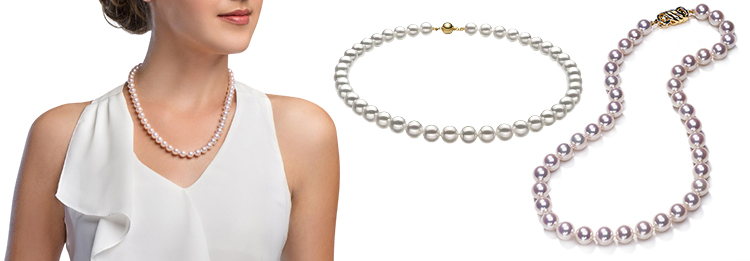
Bracelets:
● An adult Bracelet standard length of 7.5 inches
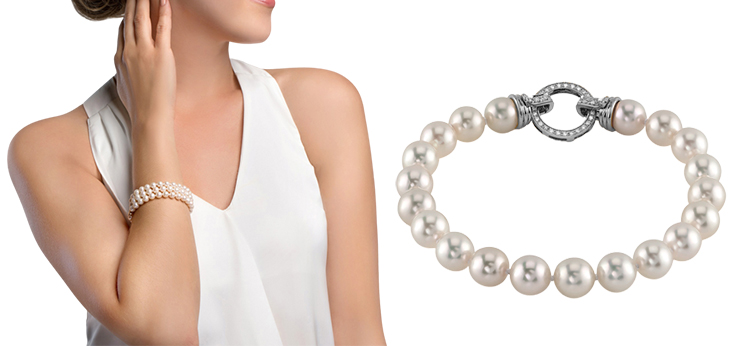
Matched Pairs for Earrings
● 7.0-7.5mm
● 7.5-8.0mm
● 8.0-8.5mm
● 8.5-9.0mm
● 9.0-9.5mm
● Rarely, 9.5-10.0mm

Notes
● Pearl necklace measurements, as mentioned above, include the silk knots in between the pearls and the adjustable clasp along with the pearls.
● You can check the length of the necklace by simply stretching it out from both ends and measuring the length from the clasp end and the other end.
● As pearls come in different sizes, that is why all the cited measurements for all the jewelry pieces are in approx. Figures can minutely vary both above and below the given figures.
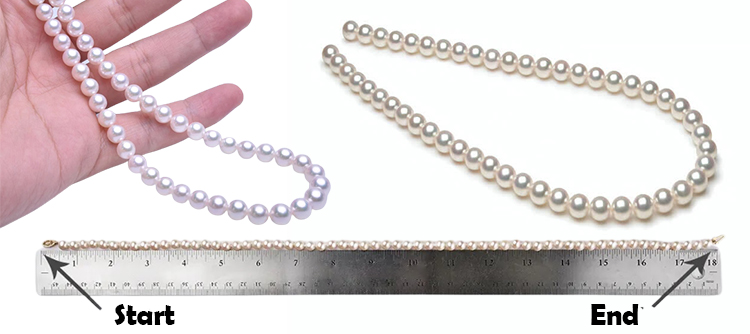
The Akoya Pearl strands' sizes are measured in half-millimeter increments; for example, 7.0-7.5mm, 8.0-8.5mm, and so on. The largest 9.5-10.0mm sizes are attained in the case of most of the Akoya pearls. Hanadama-certified Pearl strands come in 7.0-7.5mm to 9.0-9.5mm and above, making them the most versatile and perfect size as per the women's preference. Large sizes of these necklaces are quite rare and made on special orders, and they are the most expensive. For that very reason, the 9.5-10.0mm size Hanadama necklace is one of the most expensive Hanadama necklaces.
What is the difference between the Hanadama pearls and the AAA Quality Akoya pearls?
Although both have their respective advantages and drawbacks, comparing the Luster and Orient of AAA Quality Akoya strands and the Hanadama pearls can help better understand the difference between them.
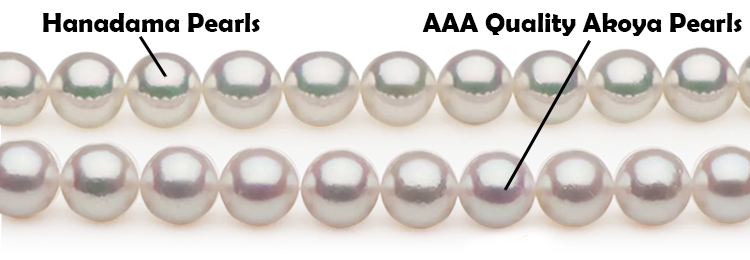
When you closely look at both types of pearls, you will find that although both pearls are quite beautiful, the grace of Hanadama Akoya pearls is mesmerizing! Due to their high iridescence and luster, Hanadama Akoya pearls have a beautiful glow.
Interestingly, Hanadama pearl certification is always provided for the exact necklace length, 18 inches. Any addition or reduction in the actual length of the certified strand can alter the original certification status of the Hanadama pearls. However, it is allowed to extend the length of the necklace beyond the original 18-inch length, but the extra pearls should be taken from a different layout of certified Hanadama pearls.
AAA Quality Akoya pearls are much easier and more flexible to work with. Apart from this, they also give freedom to make different designs of different lengths and configurations varying from single strands to multiple. Not to forget that all these liberties come at a much lower price than the AAA Quality pearls.
Why can't you have Single Hanadama Pearls?
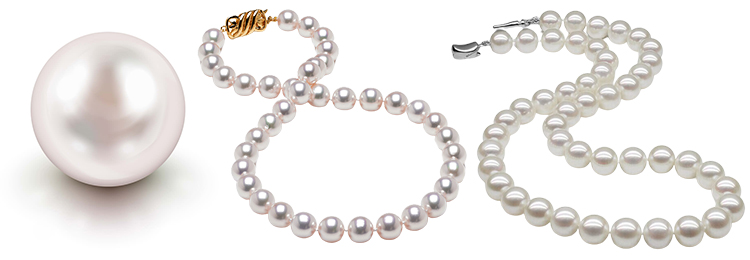
As previously mentioned, Hanadama pearls are certified in strands, and breaking the pearl set mainly invalidates certificates. Similarly, if someone wants to request PSL certification for a single Hanadama pearl, that would cost a lot. That's why single Hanadama pearl pendants and rings aren't made by the pearl jewelry sites online, as the overall cost of a single pearl would be unaffordable for many. If you wish to have a pendant or single pearl ring with radiance and luster quite similar to Hanadama pearls, AAA Quality pearls can do the trick!


Leave a Comment